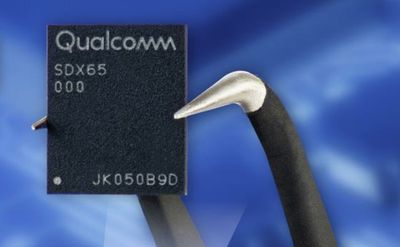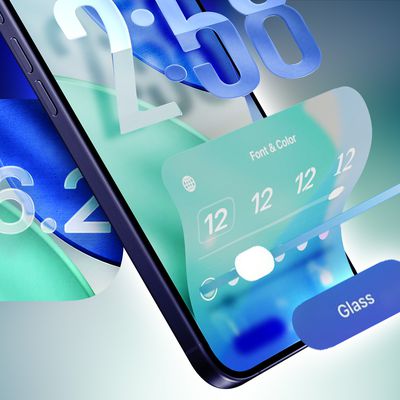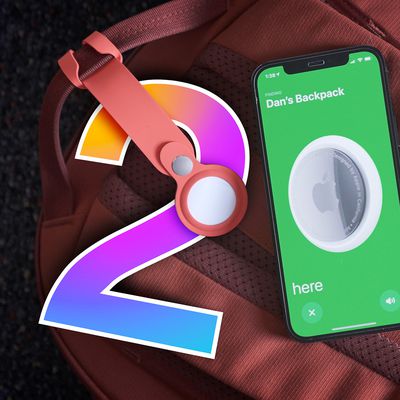Qualcomm's Snapdragon X65 Modem Upgraded With Wider mmWave Coverage Ahead of Inclusion in 2022 iPhones
Qualcomm today announced it has upgraded its Snapdragon X65 5G modem with improved power efficiency and support for wider mmWave carriers, a key requirement ahead of the rollout of 5G mmWave networks in China.

Specifically, the modem now supports wider 200MHz carrier bandwidth in the mmWave spectrum and mmWave in standalone (SA) mode, while new power-saving technologies part of Qualcomm 5G PowerSave 2.0 allow for longer battery life. These enhancements are possible because the Snapdragon X65 has software-upgradable architecture, allowing for improvements to be made to the modem over time.
First introduced in February, the Snapdragon X65 is the world's first 10 Gigabit 5G modem and antenna system for smartphones, enabling theoretical data speeds up to 10 gigabits per second. Apple will likely use the Snapdragon X65 in 2022 iPhones, as part of a multiyear chipset supply agreement with Qualcomm, building on the Snapdragon X55 in the iPhone 12 lineup and likely the Snapdragon X60 in the iPhone 13 lineup.
As with the Snapdragon X60, the Snapdragon X65 can aggregate data from mmWave and sub-6GHz bands simultaneously to achieve an optimal combination of high-speed and low-latency coverage, resulting in an improved 5G experience on the iPhone.
mmWave is a set of 5G frequencies that promise ultra-fast speeds at short distances, making it best suited for dense urban areas. By comparison, sub-6GHz 5G is generally slower than mmWave, but the signals travel further, better serving suburban and rural areas. mmWave support on iPhone 12 models is limited to the United States, but rumors suggest that iPhone 13 models may support mmWave in additional countries.
The Snapdragon X65 could be the last Qualcomm modem used in iPhones, as analyst Ming-Chi Kuo and other sources have forecasted that Apple may be ready to switch to its rumored in-house 5G modem for iPhones starting in 2023.
Popular Stories
Google Maps on iOS quietly gained a new feature recently that automatically recognizes where you've parked your vehicle and saves the location for you.
Announced on LinkedIn by Rio Akasaka, Google Maps' senior product manager, the new feature auto-detects your parked location even if you don't use the parking pin function, saves it for up to 48 hours, and then automatically removes it once...
Apple has ordered 22 million OLED panels from Samsung Display for the first foldable iPhone, signaling a significantly larger production target than the display industry had previously anticipated, ET News reports.
In the now-seemingly deleted report, ET News claimed that Samsung plans to mass-produce 11 million inward-folding OLED displays for Apple next year, as well as 11 million...
Apple seeded the second iOS 26.2 Release Candidate to developers earlier this week, meaning the update will be released to the general public very soon.
Apple confirmed iOS 26.2 would be released in December, but it did not provide a specific date. We expect the update to be released by early next week.
iOS 26.2 includes a handful of new features and changes on the iPhone, such as a new...
Apple is about to release iOS 26.2, the second major point update for iPhones since iOS 26 was rolled out in September, and there are at least 15 notable changes and improvements worth checking out. We've rounded them up below.
Apple is expected to roll out iOS 26.2 to compatible devices sometime between December 8 and December 16. When the update drops, you can check Apple's servers for the ...
Apple today released new firmware designed for the AirPods Pro 3 and the prior-generation AirPods Pro 2. The AirPods Pro 3 firmware is 8B30, up from 8B25, while the AirPods Pro 2 firmware is 8B28, up from 8B21.
There's no word on what's include in the updated firmware, but the AirPods Pro 2 and AirPods Pro 3 are getting expanded support for Live Translation in the European Union in iOS...
Apple today seeded the second release candidate version of iOS 26.2 to developers and public beta testers, with the software coming one week after Apple seeded the first RC. The release candidate represents the final version iOS 26.2 that will be provided to the public if no further bugs are found.
Registered developers and public beta testers can download the betas from the Settings app on...
Apple is actively testing under-screen Face ID for next year's iPhone 18 Pro models using a special "spliced micro-transparent glass" window built into the display, claims a Chinese leaker.
According to "Smart Pikachu," a Weibo account that has previously shared accurate supply-chain details on Chinese Android hardware, Apple is testing the special glass as a way to let the TrueDepth...
The AirTag 2 will include a handful of new features that will improve tracking capabilities, according to a new report from Macworld. The site says that it was able to access an internal build of iOS 26, which includes references to multiple unreleased products.
Here's what's supposedly coming:
An improved pairing process, though no details were provided. AirTag pairing is already...
Wednesday December 10, 2025 12:22 pm PST by
Juli CloverThe next-generation low-cost iPad will use Apple's A19 chip, according to a report from Macworld. Macworld claims to have seen an "internal Apple code document" with information about the 2026 iPad lineup.
Prior documentation discovered by MacRumors suggested that the iPad 12 would be equipped with an A18 chip, not an A19 chip. The A19 chip was just released this year in the iPhone 17, and...
Apple's next-generation Studio Display is expected to arrive early next year, and a new report allegedly provides a couple more details on the external monitor's capabilities.
According to internal Apple code seen by Macworld, the new external display will feature a variable refresh rate capable of up to 120Hz – aka ProMotion – as well as support for HDR content. The current Studio...


























